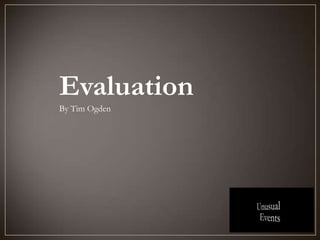The document summarizes the use of media technologies in the construction, research, planning and evaluation of a horror film trailer project.
For research, Wall Wisher and YouTube were used to conduct audience research and find reference trailers. An animatic was created using iMovie to plan shot sequences. A digital camera captured footage that was edited in iMovie, including color filters, fades and on-screen text. Survey Monkey collected audience feedback to evaluate the teaser trailer.





